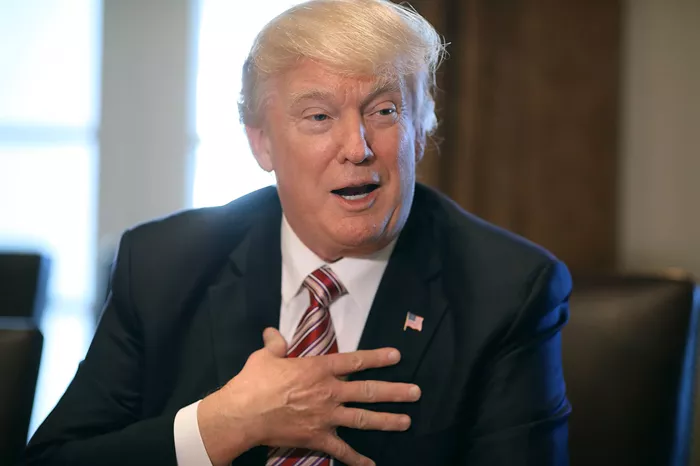Donald Trump’s recent gaffe about Kashmir would almost be amusing if the situation were not so deadly.
Speaking aboard Air Force One, Trump claimed that India and Pakistan have been fighting over Kashmir for “a thousand years.” His words made the conflict sound ancient. In reality, India and Pakistan have clashed over Kashmir only since 1947, when British India was divided into two nations.
But Trump’s mistake is not just an isolated error. It reveals a deeper problem: decades of American misunderstanding about a conflict that has shaped South Asia’s future. The timing of his remark could not have been worse.
Just days earlier, Kashmir suffered one of its deadliest attacks in recent years. This raised fresh fears of war between India and Pakistan. In response, the U.S. issued a weak, confusing statement asking for “restraint on both sides.” Now, Trump’s careless comment has reinforced the feeling that Washington still does not truly grasp the Kashmir issue — and perhaps never has.
From the start, America’s approach to Kashmir has been marked by missed opportunities, shallow efforts, and misplaced hopes.
After the 1947 partition, Kashmir’s Hindu ruler chose to join India, despite the region’s Muslim-majority population. Pakistan reacted by sending tribal fighters to seize the territory. India then airlifted troops into Kashmir. A bloody war broke out, ending with a UN-brokered ceasefire that left Kashmir divided.
The UN called for a plebiscite, where Kashmiris could vote on their future, but it never happened. India refused, Pakistan protested, and the United States, distracted by the Cold War, chose sides based on its own interests instead of principles.
In the 1950s, Washington grew closer to Pakistan, seeing it as a key ally against the Soviet Union. America sent military aid that strengthened Pakistan’s army and fueled its ambitions in Kashmir.
Meanwhile, India remained non-aligned and leaned toward Moscow. Early U.S. promises to mediate only deepened India’s distrust, resentment that still lingers today.
By the 1960s, as the Vietnam War escalated, Kashmir slipped off Washington’s radar. When war broke out between India and Pakistan again in 1965, the U.S. issued bland calls for negotiation but refused to take strong action.
In 1971, during Bangladesh’s independence struggle, the U.S. tilted heavily toward Pakistan. It even sent a naval task force to the Bay of Bengal. This Cold War maneuver alienated India for decades.
Throughout the 1980s, America paid little attention as Kashmir’s internal politics collapsed. A rigged 1987 election sparked deep anger among Kashmiri Muslims, leading to a violent insurgency. Pakistan, flush with U.S. weapons from the Afghan war against the Soviets, armed many young Kashmiris.
Washington, focused on defeating Moscow, ignored the brewing crisis. By the time the Soviet Union fell, Kashmir had turned into a major conflict zone, but the U.S. barely noticed.
It took nuclear tests by India and Pakistan in 1998 to finally get Washington’s attention. Suddenly, Kashmir was no longer just a local problem — it was a nuclear threat.
The Kargil War in 1999 brought India and Pakistan close to full-scale war. The Clinton administration stepped in and successfully pressured Pakistan to back down. Yet after that, America slipped back into its old habits — issuing calls for dialogue without doing much to help.
After 9/11, Pakistan became crucial to America’s war on terror. Washington needed Pakistan’s help to fight al-Qaeda and rebuild Afghanistan. In return, the U.S. largely ignored Pakistan’s continued support for Kashmir-focused militant groups.
Even after these groups attacked India’s Parliament and the Jammu and Kashmir Assembly in 2001, Washington responded only with mild statements. As long as Pakistan helped in the fight against al-Qaeda, its actions in Kashmir were quietly overlooked.
India tried to shift the global narrative by highlighting Pakistan’s double game. But despite gaining some sympathy, New Delhi struggled to address its own failures in Kashmir. Political alienation, military crackdowns, and a refusal to talk to local leaders fueled continued resentment.
Inside Kashmir, the nature of militancy changed. Local fighters gave way to foreign jihadists. Pakistan-ruled “Azad Kashmir” became politically stagnant, while India’s Jammu and Kashmir grew increasingly militarized. Any chance for a simple solution vanished.
Despite all this, American policy continues to see Kashmir in oversimplified terms — often as a basic Hindu-Muslim conflict. Trump’s clumsy comment about Hindus and Muslims “not getting along” shows just how little has changed. Washington has long reduced a complex problem to crude divisions.
Meanwhile, India and Pakistan remain locked in hostility. India, with its stronger economy and military, believes it can absorb Kashmir through steady policing and patience. Pakistan continues to rely on proxy fighters, hoping to force India into negotiations. Neither country has strong incentives to pursue real peace.
The U.S. now faces a choice: either continue reacting to crises or adopt a smarter, longer-term strategy. A real effort would involve pressing Pakistan to dismantle its jihadi networks, possibly by using military aid as leverage. At the same time, it would require quietly encouraging India to enact political reforms and engage in serious talks with Kashmiris.
Trump’s careless fantasy about a “thousand-year war” is just the latest reminder. Washington still has much to learn about Kashmir — and much work left to do.

